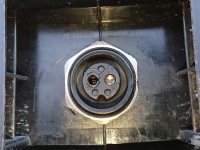tomjasz
1 GW
staldor said:Hi
Does anyone recognize the following problem?
While biking I will suddenly loose my motor power. Before this the battery indicator will normally loose a step before suddenly going down to zero. Then the battery symbol will starts to blink (as shown in the attached video). The battery shows a steady 50V, so it does not seem like a battery problem, more like a controller problem. After a while (couple of seconds to several minutes) the battery indicator will suddenly go back, and the bike starts to work again.
https://photos.app.goo.gl/FrTidzbcaA2D21Eb6
Which motor? Date? Which battery case?



